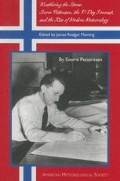Abstract
Toward the end of the war, as the Russians began their advance into Norwegian Lapland, the Germans withdrew in good order, carrying out scorched-earth operations of extreme severity: No house, shack, or shed was left standing. In this area of inhospitable climate, where the population density was less than three persons per square mile, reconstruction after the war would be exceedingly difficult. The continued decimation of the reindeer herds might have serious consequences for the nomadic part of the population.
These little things are great to little man.
—Oliver Goldsmith, The Traveller (1764)
Access this chapter
Tax calculation will be finalised at checkout
Purchases are for personal use only
Author information
Authors and Affiliations
Editor information
Editors and Affiliations
Rights and permissions
Copyright information
© 2001 American Meteorological Society
About this chapter
Cite this chapter
Petterssen, S., Fleming, J.R. (2001). Tea in the House of Lords. In: Fleming, J.R. (eds) Weathering the Storm: Sverre Petterssen, the D-Day Forecast, and the Rise of Modern Meteorology. American Meteorological Society, Boston, MA. https://doi.org/10.1007/978-1-935704-05-8_22
Download citation
DOI: https://doi.org/10.1007/978-1-935704-05-8_22
Publisher Name: American Meteorological Society, Boston, MA
Online ISBN: 978-1-935704-05-8
eBook Packages: Springer Book Archive

